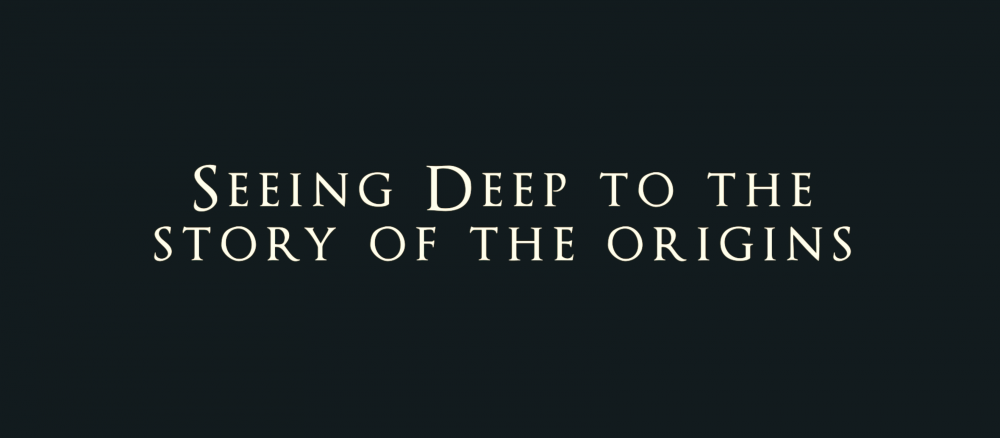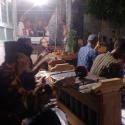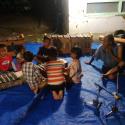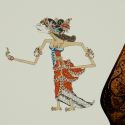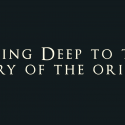The Beginning
The very beginning of everything has always had at least one tale to tell. And sometimes, these stories enclose the truth concealed by what people nowadays consider as facts or theories. If an idiom or a story is not logical enough, people would think that it may not be true. Magic or divination may seem impossible to even exist. But, the origins have always had the way of its own to magically contain its cultural value and lesson. Every corner on earth obviously possesses different cultural values one to the other. Though we cannot distinctly define which is right and wrong. We may live our lives in prose, but it is poetry that we live for. An enthralling story can advance into a narrative that inspires a shared sense of mission. That, in turn can lead to a long and great legacy. And if we see deeply enough, we may grasp the true power of story.
“Bertutur” is an Indonesian word that literally means “storytelling”. The continuation of storytelling about Kediri, has been partly contributed by one of many cultural communities in Kediri, “Kediri Bertutur”. The community has brought a performance unlike any. “Pagelaran Dan Pameran Budaya” is the catharsis of the appreciation and respect of Indonesia cultural diversity. Even though that the notion may not be considered as a new idea, the many colors of many cultures in Indonesia can emphasize the elements of the event itself. Kediri Bertutur sees that the place, “Ndalem Pojok”, or at least they call it Situs Bung Karno (Bung Karno site), is a place where we can respect every difference within each of us. That there is no need to unify the different colors that comes out of different expressions.
Before the main performance starts in the evening, in the morning I had to practice my singing for my Lir-ilir performance with Mba Har, a local violinist who is also a member of Kediri Bertutur. So, I had the opportunity to visit the place earlier and got the chance to wander around the place while its daylight. The place is apparently the place where Soekarno, the first president of Indonesia, used to spend his childhood. In Griyo Ndalem, there are two rooms that was once Sukarno used to sleep in as a child and a room when Sukarno became the president. Currently, the place is filled with several historical objects, one of them is an inscription referring to Soekarno’s quotes. The place is something more than just a historical site. I could not help but feel the energy of reconciliation harmony where I numinously felt tranquility and peace of mind. It was not merely the historical values, but the people there, they make something out of it as well. There is a distinct feeling of being there than any place else I have visited. The moment I put off my shoes to feel the sands and to touch the billowing Banyan tree where Soekarno used to train his orations, I could feel there was a sense of emotional connection to the power of the story itself. Even if it was just a glimpse of mind. Few compelling stories are more powerful than many stories told before when I had this experience. It was delusional, calm and serene, and yet, still real.
The Heart of the Story
Pagelaran Dan Pameran Budaya by Kediri Bertutur highlighted the messages of its stories based on “Cerita Panji” (The Story of Panji). The story of Panji is one of the most popular folklores in Indonesia. It simply tells about the heroism and the love life that is mainly centered on two characters; Raden Inu Kertapati (or Panji Asmarabangun) and Dewi Sekartaji (or Galuh Candrakirana). Panji, formerly spelled Pandji, was a legendary prince in East Java, Indonesia. His life formed the basis of a cycle of Javanese stories, that, along with the Ramayana and Mahabharata, are the basis of various poems and a genre of Wayang (shadow puppetry) known in East Java as wayang gedog ("gedog" means "mask"). Panji tales have been the inspiration of Indonesian traditional dances, especially in the Kediri neighborhood. The local stories grew and were connected with many other tales such as; Totok Kerot, Ande Ande Lumut, Keong Mas, and many more. Panji tales have spread from East Java to be a lush source for literature and drama throughout Malaya, a region that includes modern-day Indonesia, Malaysia, Thailand, and Cambodia. Raden Inu Kertapati (Panji Asmarabangun) is a crowned prince of Kerajaan Janggala. But the royalty does not go over his head. Let alone the fact that he has a sturdy body and a handsome face. In addition, he is super-friendly, and not just to certain people, but to all people including to his loyal servants.
The tale of Ande Ande Lumut conveys a message in its story to the readers. It has a deep meaningful value that not most people can see through. Long ago, after Kerajaan Jenggala was being sieged by the enemies, Dewi Sekartaji went missing and decided to conceal her real identity, so that no one would chase after or even kill her. Panji had done the same, he covered his real identity to find his lost fiancé, Dewi Sekartaji. Panji had proven that hiding identity, which we now signify the masks as the symbol of their masquerades in the dance of Panji and Sekartaji, does not necessarily hide our true self. In fact, it can otherwise reveal ourselves as a whole. The fact that Panji is a friendly and an even better person is obviously correct. If we are to wear any type of mask, we do not concern about our looks nor our identities. But in doing so, we can show other who we really are in our actions. There is a saying “A man is least himself when he talks in his own person. Give him a mask, and he will tell you the truth.” Though the phrase seems to be both severely true and untrue. There are just things that people are willing to reveal only when they are able to remain anonymous. Sometimes we do not want the burden of having our particular idea attributed to our social identity. We will only reveal something when that identity is obscured and the statement will not go down on our permanent record. Do good, and be good. That is what Panji has been along the journey, his true self.
The Mask
Dozens of the local artists in Kediri Bertutur told the tale in many types of form of cultural arts and performances splendidly. But one that glares me the most is the dance of Panji Tani. The masks of Panji and Sekartaji covered with white, glazed staring down eyes and a seemingly cusped mouth. The origin of the mask itself appeals its power of its own story. Each of its detail remarks a philosophical value. The facial expression of the mask describes a holy person, the idiom is gentle, and the movement of the dance is tender. The dance defines someone who is mildly tender, peacefully calm and invulnerable to any kind of temptation. The dance of Panji Tani itself is a paradox. Because the music and the dance movement contradicts to each other.
Panji himself describes the life of the ancestors. They are consciously religious and acknowledges the power of the Creator. The ritual depicts a form or an expression of a man surrendering to the creator and man’s gratitude for the blessings of life and nature. Panji is the catharsis of a man who depends on the power of the Creator instead of his own will and power. Panji, a crowned prince, living in a life of a humble farmer, is a form of exemplary of a caretaker. Farmers symbolize leadership for the sake of prosperity to their people. Panji as a farmer represents the exemplary of leadership and caretaking at once. Which strongly reflects to Dewa Wishnu traits as a leader and a caretaker.
The dance of Panji Tani as hero of Javanese culture wearing mask is acculturation between ancient religion and and Hinduism-Buddhism. According to the myth that Panji disguises to find his fiancé, Sekartaji, also masquerading amidst the village, the mask of Panji and Sekartaji are the emblems of the god’s presence camouflaging in kings’ bodies. As I said before, the masks signify the notion of them camouflaging through the woods. They sometime meet, but because they both disguised, they did not recognize each other. A parable to this is the sun and the moon. Panji is the sun, Sekartaji is the moon. Therefore, scarcely will they meet. But when they do, it will shape a beautiful harmony. In the light of the moon, it symbolizes the wedding of the universe. Or in this case, the wedding between Panji and Sekartaji.
In the era of Majapahit, the origins, a similar dance was performed in order to summon a mystical paradoxical force. The dance was hoped to achieve the foundations of universal paradox, manhood and womanhood, altogether summoned. The dance appeals the paradoxical universal power. Agatha Aurelia herself emphasized the concept of the paradox itself. The choreography encompasses the values of ritual, traditional arts, ballet, classical Javanese and water and birds. She is Panji, she is Sekartaji. She is the sun and the moon, day and night, earth and sky, rough and tender, visible and invisible, life and death, past and present. Time and space of the paradox lies within herself, demonstrating Panji as an image of Javanese cultural system that is the harmony of God, men and the world.
Music is the mask of a strange yet powerful force that has the ability to change how we think and feel. If we are to see the context of the the dynamicity of the music, the paradox has masked the the entire performance because the music and the choreography energy seem to contradict to each other. However, they are still in one harmony, the mildly tender movements were beautifully complemented by the loud music. It tells a powerful story, a philosophical notion claiming that men can control their carnal desires and are not easily tempted.
The mythical man-creature in the dance of Panji Tani depicts the divinity of humans. The cow itself is a symbol of obedience, loyalty, power, intelligence, and fertility. Panji Tani taught us that it was crucial to nurture the harmony between us and mother nature. The unification of Panji and Sekartaji is a form of power that comes from a symbol of Lingga and Yoni. Lingga Yoni is a symbol of Shiwa. It portrays the mark of creation, fruitfulness, congruence and happiness.
In the era of today, masks are used as in the performing arts to entertain us by bringing storytelling and theater to life. When wearing a mask, wearers may reveal him/herself as gods, heroes, spirits, demons, or tricksters while at the same time hiding their identities.
The Harmony
The dance of Panji Tani, the puppetry of Enthit Ngarit, the dance of Klono Joko’s Mask, the Jaranan’s Art, Lir-ilir and even a little copy of Patrick Vanhoebrouck’s mind, have altogether brought a magic to tell a powerful story to the all of the audiences and even to the performers themselves. And when the show had finally come to a point where it is over, words began to spread all over. Pagelaran Dan Pameran Budaya by Kediri Bertutur was there, and always be intangibly there to flow the stories of many to many.
Indeed, Kediri Bertutur has already “bertutur” even when it is over, the tuturan (story) will always be there to awake the force of Javenese cultural value. Stories that are prevailing, philosophic, enthralling and engaging. The emergence of many cultures into one has created a powerful storytelling. With an eye made quite by the power of story, and the deep sight to the origins, we saw into the life of things. We learn things just as much as we hear the story. We are connected in every inch of every value within the harmony. Along the journey, I have seen deep to the origins of every life of things that Kediri Bertutur had come to tell. I have also learnt that the more thankful I am, the more I have to be more thankful for.

